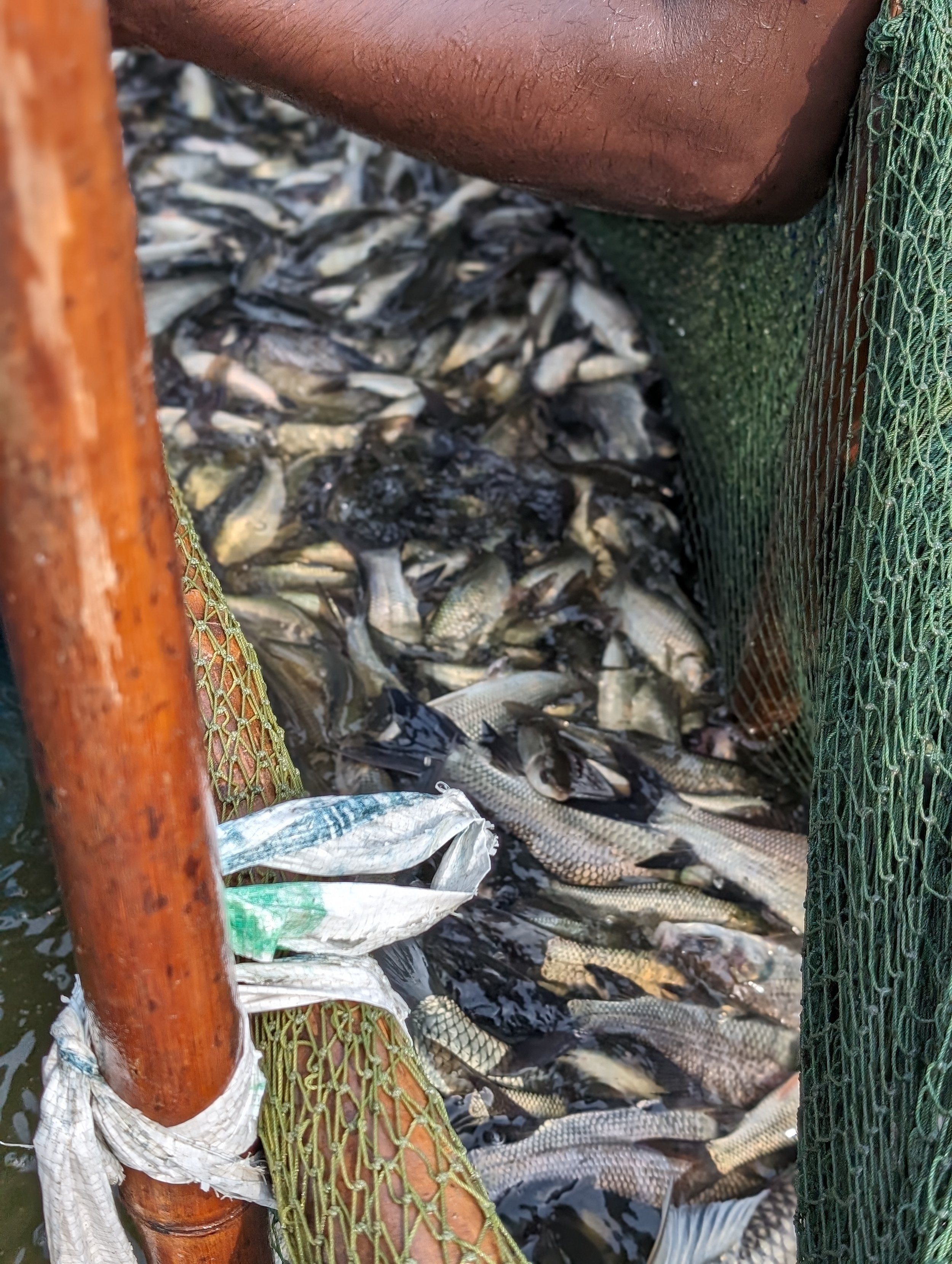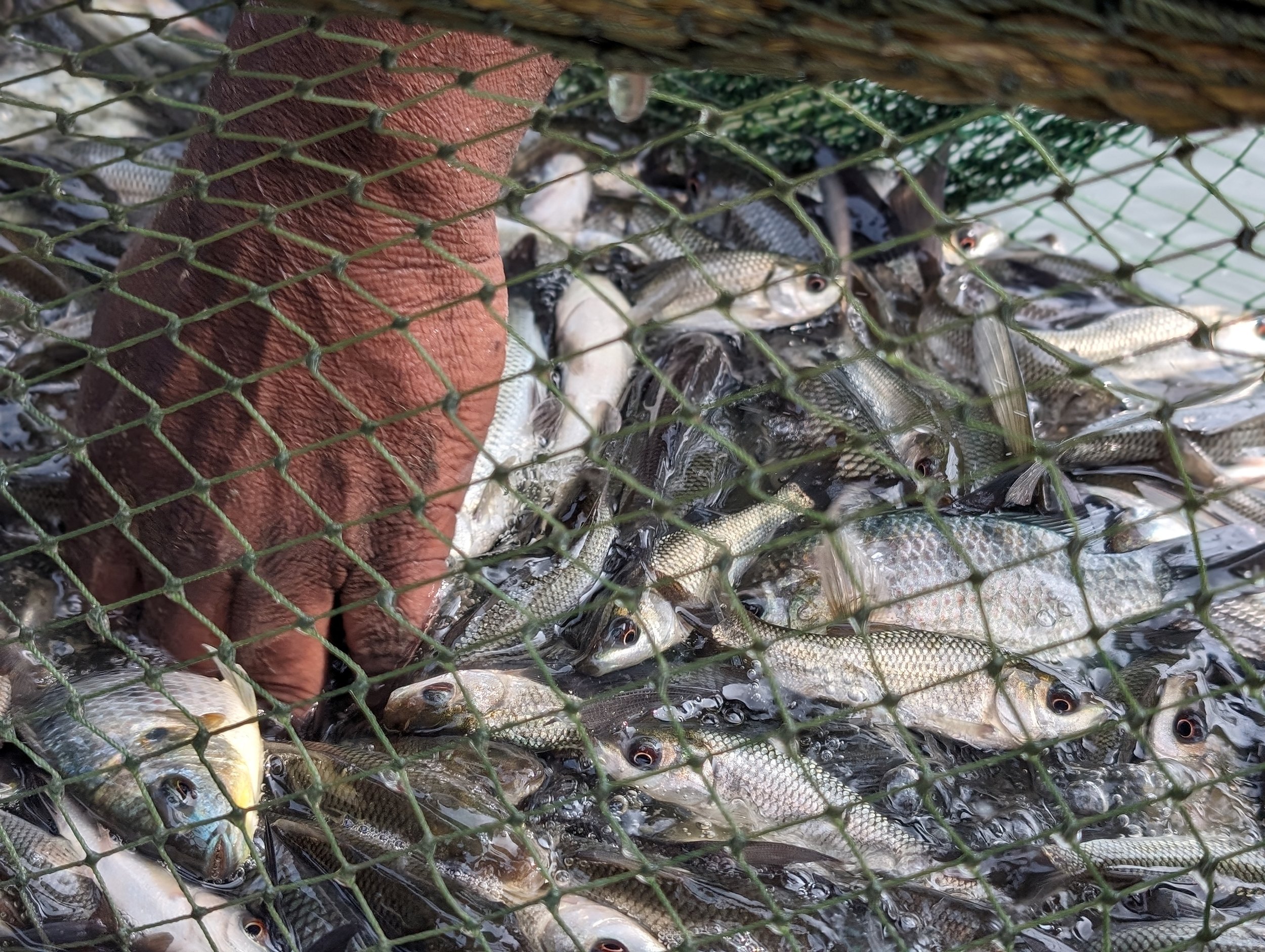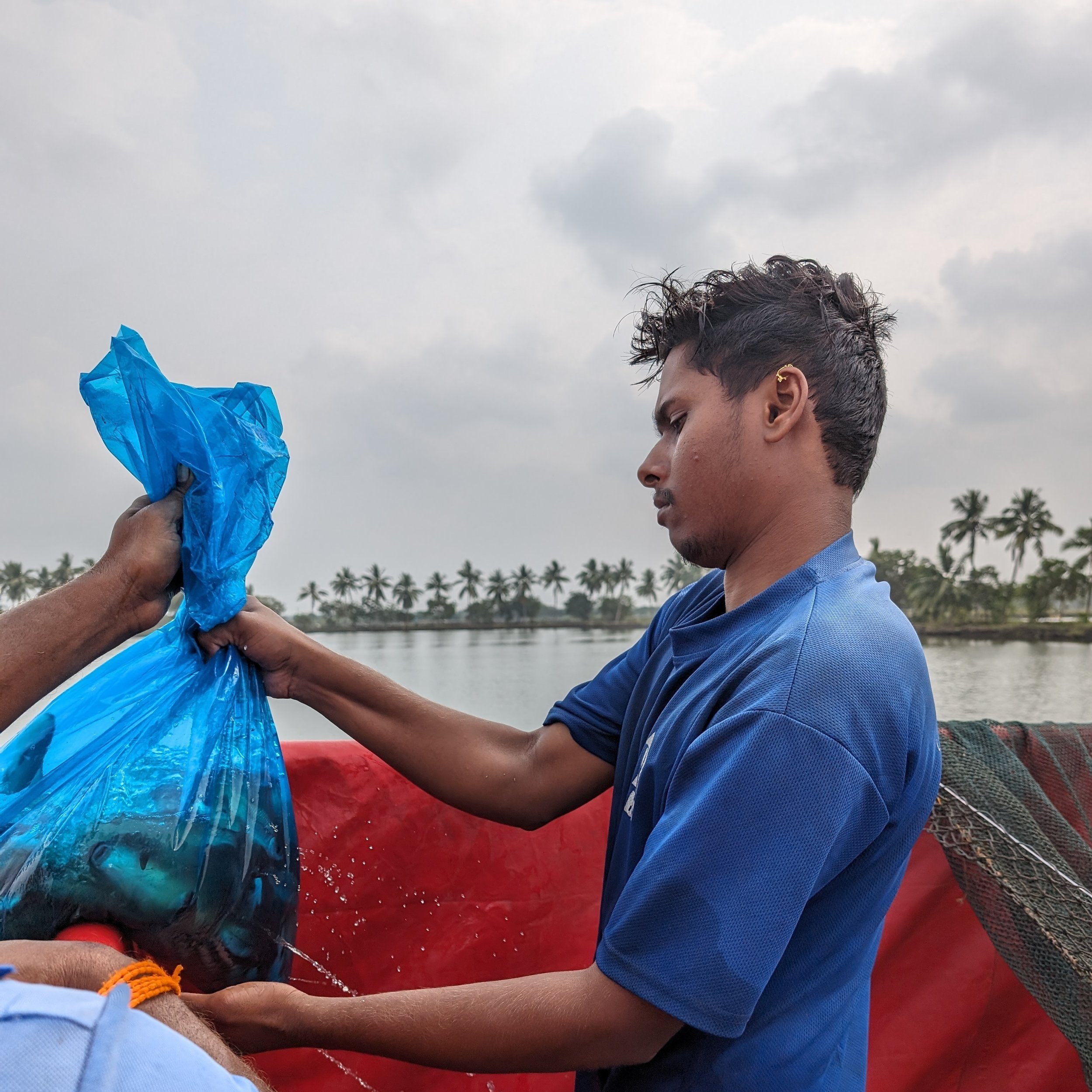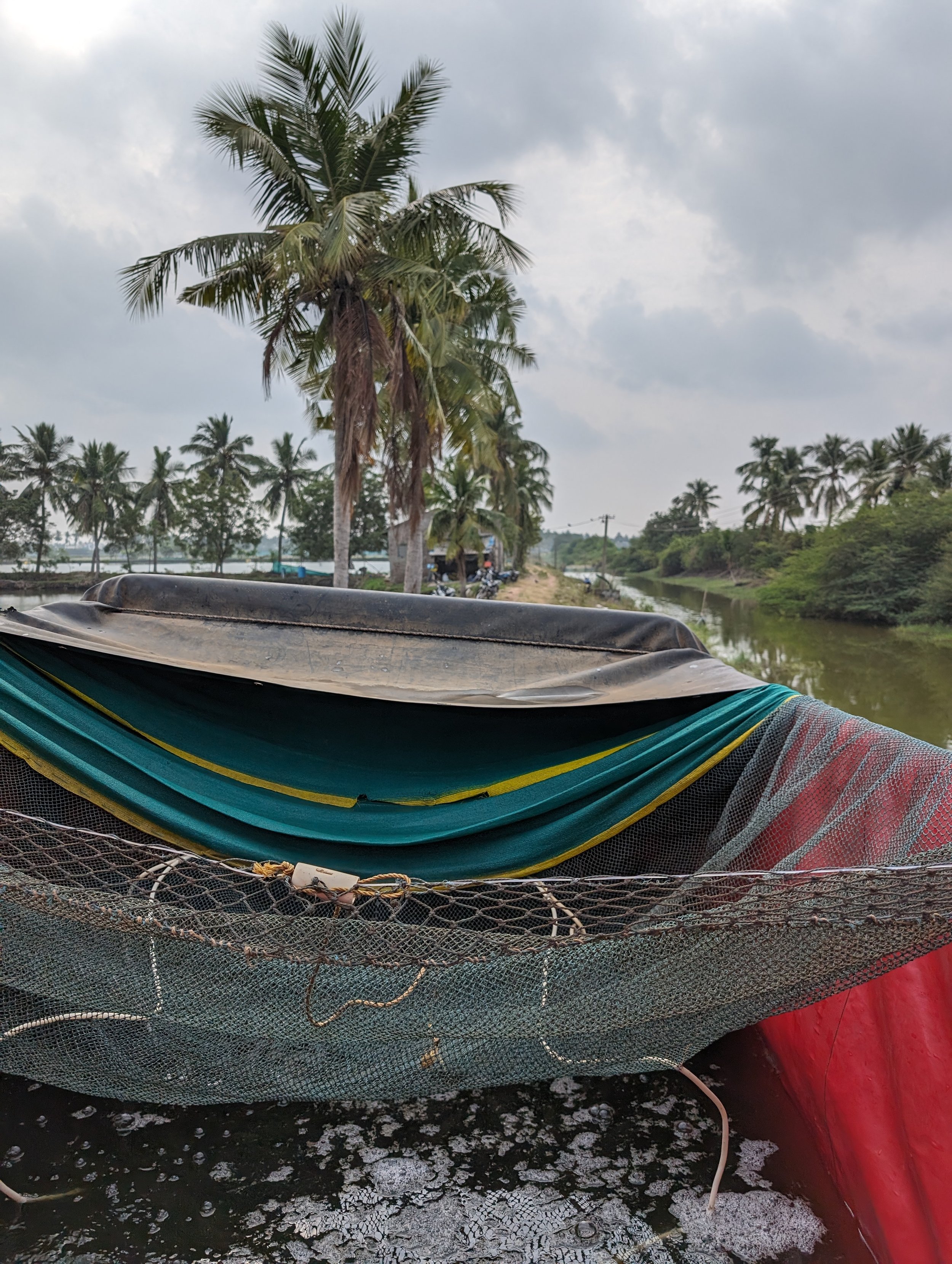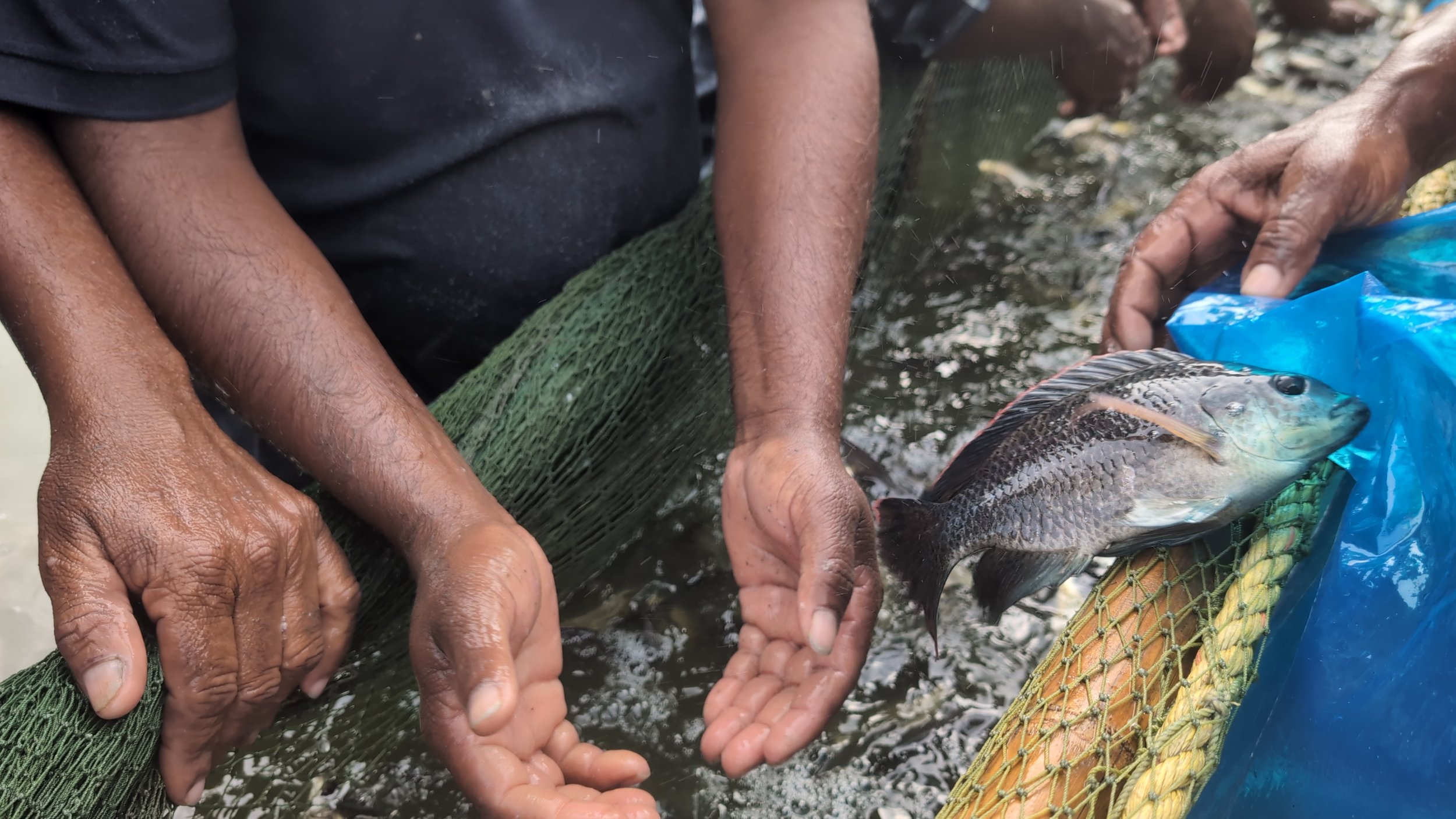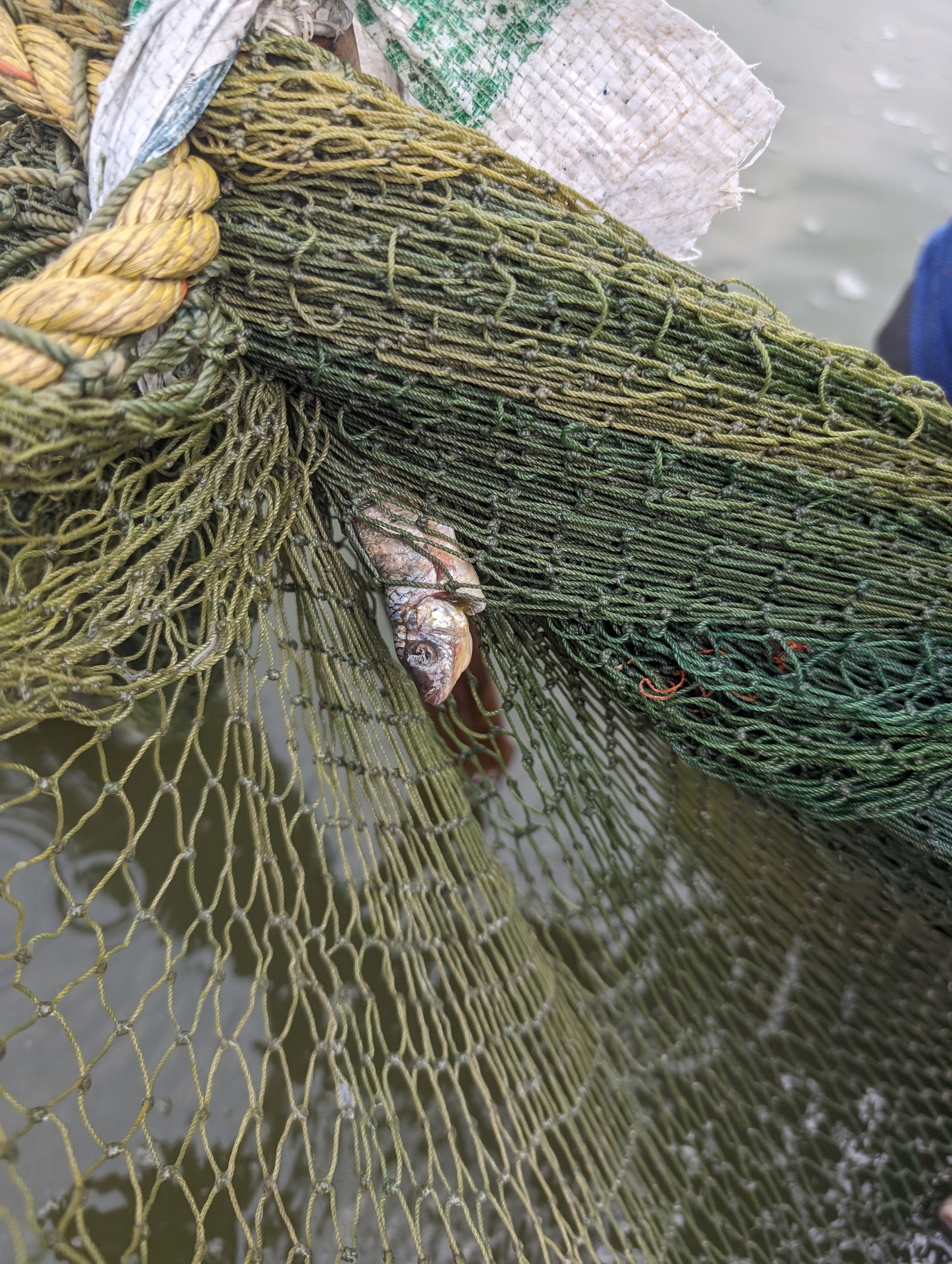Can carp be cute? Aidan’s visit to FWI in India
8 minute read — Published 16th July 2024
In early 2024, I visited one of our recommended charities, Fish Welfare Initiative (FWI) in India. For me, the trip brought to life what FarmKind is all about: making farming kinder, not just for animals, but for people too.
The experience of seeing fish farms first hand gave me a surprising, newfound bond with the fish. But I also gained a better understanding of the complexities of fixing farming. To build a better system, we need to also grapple with the struggles of the farmers on the front line of our food production system and fix that system for both farmers and the farmed.
Carp can be cute?
Okay.. maybe ‘cute’ is an overstatement. My feelings about carp might not have come that far, but I at least left FWI with a much deeper empathy for our slippery aquatic friends.
This guy? Cute? I guess if you really squint at it..
It's hard to feel any emotional connection to the plight of fish. Most don't communicate with the kind of sounds which help us understand what animals are feeling. Even when they make sounds, we don’t intuitively understand what they mean the way we do with a cat's contented purr or a pig's terrified scream.
The blank faces of fish show no expressions we recognise. They don't even breathe the same air we do! How can we be expected to empathize with beings so entirely unlike ourselves?
The scientific consensus is clear: fish are sentient and capable of experiencing pain. But that fact alone doesn't make it any easier to truly feel that empathy the way we naturally do for other animals.
So when I joined the FWI team observing a fish harvest at an inland farm in Andhra Pradesh, I didn't anticipate feeling much at all. And at first, I didn’t.
The state of Andra Pradesh (where FWI operates) on a map of India
As crews of men slowly pulled nets through a massive pond, corralling thousands of carp into an ever-shrinking space, I remained unmoved. But as the fish were confined closer and closer to me so I could see what was going on in more detail, I noticed things I couldn’t see at first.
The water's surface became coated in what looked like soap suds but was actually mucus - a physiological stress response being excreted by the gasping, panicked fish. I watched them desperately trying to hurl themselves over the net walls to freedom, while others caught above water flailed as they slowly asphyxiated to death.
That’s when I felt something. And suddenly everything else I’ve learned about what fish experience on factory farms hit differently. When I thought about fish spending much of their lives struggling to breathe in dirty water without enough oxygen, I felt something. When I thought about fish raised in sea cages enduring the experience of sea lice slowly eating their skin and eyes, I felt something.
I think it was important for me to see the fish’s experience first hand and in real time to begin the process of really internalising it. And you know what? Carp might be a bit plain, but some fish are definitely cute, and that I’ll stand by!
This puffer fish (left) and blob fish (right) show that when it comes to fish, cuteness wasn’t divided evenly. [Fun fact: So called '“blob fish” live in the deep ocean where the high water pressure means they look quite normal. They only expand to look like this when removed from their natural habitat]
Let’s fix this for the farmers and the farmed
After a morning witnessing the distress of thousands of fish being transferred live onto trucks, many dying in the process, it was hard to summon much goodwill towards the farm operators. But my feelings became more nuanced after meeting some of them.
They are regular people trying to survive in a challenging economy. In Andhra Pradesh, where the GDP per capita is half that of Delhi,1
Most of them understand that something’s wrong with the status quo. In fact, Karthik, FWI’s Managing Director, told me that some farmers don’t even eat the very fish they raise, having seen the farming process and the chemicals used to make the final product appear fresher for market. This is why many are eager to partner with Fish Welfare Initiative who offer much needed guidance on how to improve the health and wellbeing of their fish.
It's hard to stay outraged at people who are well-intentioned and treat you with kindness. I found the farm operators I met friendly and generous. One even fed us (maybe a big cost for someone on these fish farmer’s wages) and insisted on topping up our plates the moment there was any space.
A naive part of me wishes these farm operators would simply refuse to engage in practices that cause unnecessary suffering, but I need to face facts: Many farm operators are victims of the status quo just as the fish are. They need support to transition to livelihoods that are kinder to animals and more secure for themselves.
Subrata and I walking to meeting with one the farm operators who have partnered with FWI to improve fish welfare
Take Subrata. He spent eight years working in the aquaculture industry before joining FWI to help convince more farm operators to join the Alliance for Responsible Aquaculture.
Despite my instinctive initial suspicions about his past, I found Subrata to be one of the kindest and warmest people I've met. Trying to understand how he could have worked in the industry, I probed a bit about his views on animal welfare. He told me he believes that all living beings deserve respect and kindness. I didn’t ask whether this belief evolved over time or was always there, but on reflection I don’t think it matters. The point is that we all have a time before we took animal welfare seriously, both in our beliefs and in our actions.
We don’t control when we’re first introduced to the ideas that spark the beginning of this journey towards greater compassion for animals. And so people who played for the ‘wrong side’ before completing the journey aren’t villains, nor are those who haven’t started their journeys yet.
Meeting Subrata and the farm operators reminded me that it’s important not to judge people but to support them as they seek to make positive changes for the animals and for themselves. I believe this is crucial to make farming kinder for everyone involved.
Wrapping things up
I think it’s safe to say that this Viperfish falls in the “not cute” category. Image source here.
Building a more sustainable and ethical food system starts with more of us recognizing that all sentient beings deserve to be treated humanely, whether they’re cute or not. I know that sounds like a tall order, but if I can feel empathy for a carp then maybe there is hope for us yet.




